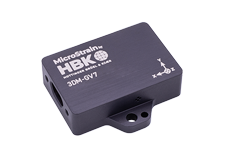FAQs
Videos
The following orientation outputs formats are available:
- Acceleration
- Angular Rate
- Magnetic Vector
- DeltaAngle and DeltaVelocity
- Orientation Matrix
- Quaternion
- Euler Angles (pitch, roll and yaw)
- ...and more.
A detailed description of these outputs can be found in the Data Communications Protocol manual of each product.
The standard units support both USB and RS-232 interface.
The OEM units support both USB and TTL.
Yes. We provide a complete data communications protocol manual which describes in detail each and every command and response that is available with the device. Applications may be developed in any programming environment (C, VB, LabVIEW, Linux, Matlab, etc.) which supports serial communication.
We provide a general application for Microsoft XP/Vista/Win 7 operating systems that configures, reads, displays and saves data generated by the device. This application (MIP Monitor) supports both the USB and RS-232 communication interfaces.
When you initially purchase a 3DM-GX3, a starter kit (SK) provides you with everything you need to get started! SKs include a 3DM-GX3 module, communication and power cables, software, manuals and GPS antenna if applicable. In subsequent purchases you may only require additional modules or other individual components. Several communication interfaces are available creating several starter kit variations.
|
Static accuracy |
±0.5° pitch, roll, heading typical for static test conditions |
|
Dynamic accuracy |
±2.0° pitch, roll, heading for dynamic (cyclic) test conditions and for arbitrary angles |
Yes, but the method is a bit involved. The user would have to put the -45 in direct mode to the GPS, use the u-blox commands to retrieve the almanac, and put the -45 back into normal mode for regular use.
The GPS datasheet accuracy is CEP at 24 hours stationary, a common test condition for GPS. CEP is a 50% confidence number. Like other single (non-differential) GPS units, our accuracy is limited by constellation geometry, atmospheric, and clock error effects (largest contributors when selective availability is not included.) This pegs best performance at approximately 5 meters RMS dynamic. This is improved for areas where WAAS is enabled.
We have not performed extended duration tests against a surveyed point, but have tested against a higher-performing unit (with tightly-coupled filter.) Dynamic RMS position error during car and flight tests for the vertical channel, hover around 5m, with individual excursions out to about 10m. Telling which unit was more accurate at a given time, and at which extreme of the uncertainty ellipse each is at, is more difficult.
Yes, the antenna is powered at 3 Volts and draws 10 mA.










